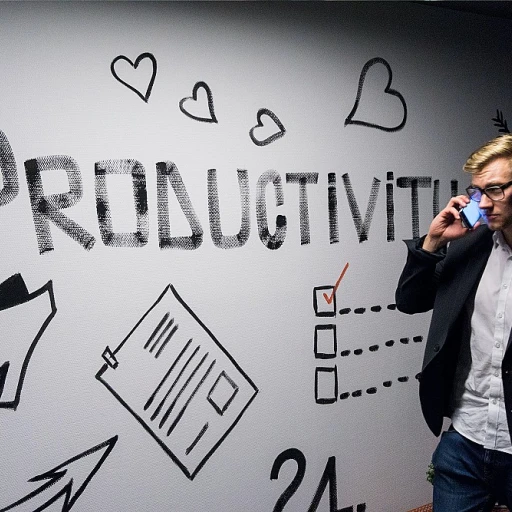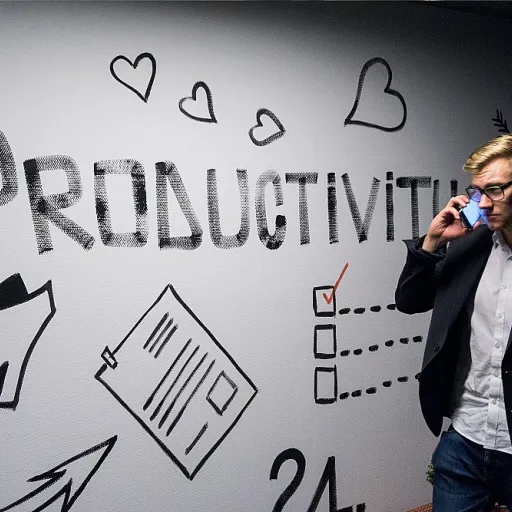
What are the 5 languages of appreciation in the workplace?
Decoding the Five Languages of Appreciation at Work
Appreciation in the workplace is more than just saying "thank you." It is about recognizing and valuing the unique contributions of team members in ways that resonate with them personally. The concept of the five languages of appreciation, adapted from the popular "love languages" framework, helps organizations and leaders foster a culture where employees feel genuinely valued. These languages are outlined in the book by Chapman and White, and have become a cornerstone for building stronger relationships and employee engagement in professional settings.
- Words of Affirmation: Verbal praise or written recognition that highlights specific achievements or qualities. This language appreciation is about authentic appreciation, not generic compliments.
- Quality Time: Giving someone your undivided attention, whether through one-on-one meetings, mentoring sessions, or collaborative work. This approach helps employees feel valued and strengthens team relationships.
- Acts of Service: Helping with tasks or projects, showing support through action. Leaders who step in to assist demonstrate appreciation work in a tangible way.
- Tangible Gifts: Small, thoughtful items that show recognition. These do not have to be expensive; the key is that the gift is meaningful to the recipient.
- Physical Touch: In a professional context, this is the most nuanced. Appropriate gestures like a handshake or a pat on the back can convey support, but organizations must be sensitive to boundaries and workplace culture.
Understanding these languages appreciation is crucial for leaders and mentors aiming to build a positive work environment. When employees receive recognition in their preferred language, they are more likely to feel engaged and motivated. This framework is not just theory; it is supported by research and practical experience in organizations worldwide.
For those interested in exploring how genuine appreciation shapes professional relationships, understanding the true meaning of genuine hospitality in professional mentoring offers deeper insights into fostering authentic connections at work.
As we move forward, it becomes clear why appreciation matters in professional mentoring and how it can be integrated into daily interactions to create a thriving workplace culture.
Why appreciation matters in professional mentoring
How Appreciation Shapes Mentoring Relationships
Appreciation in the workplace is not just about saying "thank you." It’s a key driver for building trust and motivation, especially in professional mentoring. When leaders and team members feel valued, they are more likely to engage, share ideas, and support each other. This sense of recognition helps create a positive work environment where people can grow and thrive. Mentoring relationships benefit greatly from authentic appreciation. When mentors use the right language of appreciation, mentees feel seen and understood. This goes beyond generic praise. It’s about recognizing specific contributions, efforts, and progress in ways that resonate with the individual. Whether it’s through words of affirmation, quality time, acts of service, tangible gifts, or even appropriate physical touch, the impact is real.- Employees who feel appreciated are more engaged and productive.
- Organizations with a culture of recognition see higher retention rates.
- Appreciation languages help bridge communication gaps between mentors and mentees.
Identifying your mentee’s preferred language of appreciation
How to Discover What Makes Your Mentee Feel Valued
Understanding the unique language of appreciation that resonates with your mentee is a key step in building trust and fostering authentic appreciation in the workplace. People respond differently to recognition, and what feels meaningful to one employee may not have the same impact on another. This is why it’s important for mentors to read the cues and preferences of their mentees, rather than assuming a one-size-fits-all approach. The five languages of appreciation—words of affirmation, quality time, acts of service, tangible gifts, and appropriate physical touch—each offer distinct ways to show appreciation at work. Some team members may thrive when their efforts are acknowledged publicly, while others prefer a quiet conversation or a thoughtful gesture. The book "The 5 Languages of Appreciation in the Workplace" by Gary Chapman and Paul White, available in paperback, explores these differences and provides practical guidance for leaders and organizations. Here are some practical ways to identify your mentee’s preferred language of appreciation:- Observe reactions: Notice how your mentee responds to different forms of recognition. Do they light up when praised in front of the team, or do they seem more comfortable with private feedback?
- Ask directly: Open a conversation about appreciation. Questions like, "What makes you feel most valued at work?" or "How do you prefer to receive recognition?" can reveal important insights.
- Use assessment tools: Tools like the MBA Inventory can help both mentors and employees identify their primary appreciation languages, making it easier to tailor your approach.
- Reflect on past experiences: Encourage your mentee to share stories about times they felt truly appreciated in previous roles or teams. Patterns often emerge that point to their preferred language.
Common challenges in expressing appreciation during mentoring
Barriers to Expressing Appreciation in Mentoring Relationships
Expressing appreciation in the workplace, especially during professional mentoring, can be more complex than it seems. Even with a clear understanding of the five languages of appreciation—words of affirmation, quality time, acts of service, tangible gifts, and physical touch—mentors and mentees often encounter obstacles that make authentic appreciation challenging.- Cultural and Organizational Norms: Some organizations have a work culture that does not openly encourage recognition or appreciation. Employees may feel uncomfortable showing appreciation, fearing it could be misinterpreted or seen as unprofessional.
- Misreading Appreciation Languages: People often default to their own preferred language of appreciation, not realizing that their mentee or team members may value different forms. For example, a mentor who values acts of service might overlook a mentee’s need for words of affirmation or quality time.
- Time Constraints: In busy work environments, leaders and employees may feel they lack the time to show appreciation in meaningful ways. Quick recognition can sometimes come across as insincere or rushed, reducing its impact.
- Fear of Favoritism: Leaders and mentors sometimes worry that showing appreciation to one person or a small group could be perceived as favoritism, leading to tension within the team.
- Uncertainty About What Feels Authentic: Not everyone is comfortable with all languages of appreciation. For instance, physical touch is rarely appropriate in most workplaces, and tangible gifts may not align with company policies or personal preferences.
Overcoming Challenges for Meaningful Recognition
To address these challenges, organizations and mentors can focus on building a culture where authentic appreciation is normalized and encouraged. This means:- Encouraging open conversations about preferred appreciation languages among team members
- Providing training or resources, such as the "MBA Inventory" or books on appreciation languages, to help employees and leaders better understand each other
- Setting clear guidelines for recognition to ensure it is inclusive and appropriate for all
- Making time for regular, genuine appreciation—whether through quality time, acts of service, or words of affirmation
Practical ways to integrate appreciation into mentoring sessions
Simple actions that make a difference
Integrating appreciation into mentoring sessions is not about grand gestures. It’s about consistent, authentic actions that help people feel valued in the workplace. When mentors use the right language of appreciation, they build stronger relationships and foster a positive work environment. Here are practical ways to show appreciation during your mentoring journey:
- Use words of affirmation: Offer specific, genuine praise. Instead of a generic “good job,” recognize the mentee’s unique contributions to the team or organization. This helps employees feel seen and boosts employee engagement.
- Quality time: Dedicate focused, distraction-free time to your mentee. Listen actively, ask thoughtful questions, and show you value their growth. Even a short check-in can make a big impact on your mentoring relationship.
- Acts of service: Support your mentee by helping with tasks or sharing resources. For example, review a project together or introduce them to helpful contacts. These acts show you care about their success and development.
- Tangible gifts: While not always necessary, small tokens like a book relevant to their goals or a thank-you note can reinforce appreciation. Make sure gifts are meaningful and appropriate for your workplace culture.
- Appropriate physical touch: In some organizations, a handshake or a pat on the back can be a powerful way to express appreciation. Always consider personal boundaries and the culture of your workplace before using this language.
Building a culture of authentic appreciation
Mentors and leaders who regularly express appreciation help create a culture where team members feel valued and motivated. This goes beyond individual sessions—it shapes the overall work environment. Encourage employees to recognize each other’s efforts, not just rely on formal recognition programs. When appreciation becomes part of daily interactions, organizations see stronger relationships, higher employee engagement, and better outcomes.
Tips for lasting impact
- Read about the five languages of appreciation to better understand how to apply them with your mentee.
- Use tools like the MBA Inventory to identify preferred appreciation languages among team members.
- Model authentic appreciation as a mentor. When leaders demonstrate these behaviors, others in the workplace are more likely to follow.
- Keep feedback timely and specific. Recognition loses its impact if it’s delayed or vague.
By weaving appreciation into every mentoring session, you help employees and mentees feel valued and supported. This approach strengthens relationships, enhances employee engagement, and builds a more positive workplace culture—benefiting both individuals and organizations.
Measuring the impact of appreciation on mentoring outcomes
Tracking Progress and Evaluating Appreciation in Mentoring
Measuring the impact of appreciation in mentoring relationships is essential for understanding what truly helps mentees feel valued and engaged. While appreciation in the workplace can seem intangible, there are practical ways to assess its influence on both individuals and the broader team culture.- Feedback Loops: Regular check-ins and open conversations allow mentors and mentees to discuss how appreciation is being expressed and received. This helps identify which appreciation languages resonate most, whether it’s words of affirmation, quality time, acts of service, tangible gifts, or other forms of recognition.
- Employee Engagement Surveys: Many organizations use surveys to measure employee engagement and satisfaction. Including questions about appreciation and recognition can reveal if employees and team members feel genuinely valued in their work environment.
- Observation of Workplace Culture: Leaders and mentors can observe changes in team dynamics, collaboration, and morale. When authentic appreciation is integrated into mentoring, positive shifts in workplace relationships and culture often follow.
- Retention and Performance Metrics: Tracking retention rates and performance improvements can provide indirect evidence of the impact of appreciation. Employees who feel recognized and appreciated are more likely to stay with the organization and contribute at a higher level.
- Use of Tools and Inventories: Tools like the MBA Inventory can help identify preferred appreciation languages among employees. Over time, comparing these insights with mentoring outcomes can highlight which approaches are most effective.












